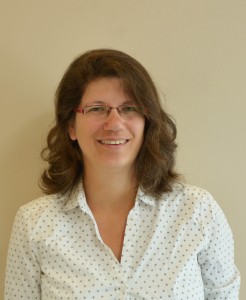Little-Big Challenge
Three-dimensional characterization developed by a Technion researcher and her colleagues in Illinois will promote miniaturization in semiconductor manufacturing
New technology developed at the Technion and in Illinois is expected to bring about a dramatic leap in the miniaturization of electronic devices. The study, which included researchers from the University of Chicago and from Argonne National Laboratory in Illinois, was led by Dr. Tamar Segal-Peretz, currently a faculty member at the Technion’s Wolfson Department of Chemical Engineering, during her postdoc at Chicago.
The study, published in the journal ACS Nano, focuses on the self-assembly of block copolymers – polymer chains that serve as templates in production processes (nano-fabrication). The paper presents the production of nano-templates using the self-assembly process of block copolymers and a new approach for characterizing the nano-templates. Using the block copolymers enables production in dimensions smaller than 10 nm, which is considered a complex challenge in the semiconductor industry.
Deep into the Layers
Miniaturization to small dimensions and the use of block copolymers requires a thorough understanding of the processes occurring deep in the layers. Dr. Segal-Peretz said, “Most of the tools currently available only examine the surface of the material, thus missing important information that is below the surface. The study now published shows that our approach – three-dimensional mapping of structures using scanning transmission electron microscopy (STEM tomography) is essential for understanding the self-assembly processes and creating nano-patterns whose quality is much higher. Combining molecular simulations with the three-dimensional information enables us to understand the interactions between the copolymers and the patterns on the substrate and the source of the spatial fluctuations in the nanostructures. Thus we are paving the way for designing and manufacturing improved patterns and devices, not larger than 5 nm in size – much smaller than the current components manufactured using nanolithography.”
Today, electronic devices are manufactured using photolithography – where light is projected through a mask. With this method, miniaturization of the templates for production is limited by the wavelength. Short wavelengths are necessary for small devices, and generating such radiation is a hard task. Dr. Segal-Peretz said, “The advantage of block copolymers is that the size of the template is determined by the chemistry of the polymer and not by an external factor such as wavelength.”

2. Fabrication of nano-patterns using directed self-assembly of block copolymers. The 3D nanostructure is revealed through TEM tomography characterization.
Directed Self-Assembly
But self-assembly alone is not sufficient for manufacturing purposes, because the location of the templates that are formed in this way is not controlled. “In order to direct the polymers to the desired position we use an initial template that is easy to manufacture, and the template directs the polymers. This process is called directed self-assembly. Combining this approach with existing photolithography processes enables us to overcome the limitations involved in producing nano-templates, while maintaining low costs.”
As stated, one of the challenges in manufacturing electronic components is the existence of defects in the template. This is a scientific and technological problem since without full identification of the defects below the surface, it is difficult to understand the source of the defects and therefore it is difficult to develop improved manufacturing methods. “Ultimately the world is three-dimensional,” said Dr. Segal-Peretz, “and therefore no two-dimensional representation of the world is sufficient.”
Three degrees at the Technion
Dr. Tamar Segal-Peretz completed all of her degrees at the Technion – after an undergraduate degree in Biochemical Engineering at the Department of Chemical Engineering, she worked in the industry on the development of night vision systems, and then entered the direct doctorate track at the Russell Berrie Nanotechnology Institute (RBNI). She completed her doctorate on polymer-based solar cells at the Department of Materials Science & Engineering, under the supervision of Prof. Gitti Frey. After her postdoc at the University of Chicago and Argonne National Laboratory, she joined the Wolfson Department of Chemical Engineering.
The 3D structure of block copolymer nano-patterns, obtained through TEM tomography. The width of each nano-pattern is 10 nanometers.
The 3D characterization enables direct observation of the spatial fluctuations of block copolymers. Minimal fluctuations are desired for semiconductor nanofabrication. The movie shows a series of cross section images obtained from the 3D characterization.



